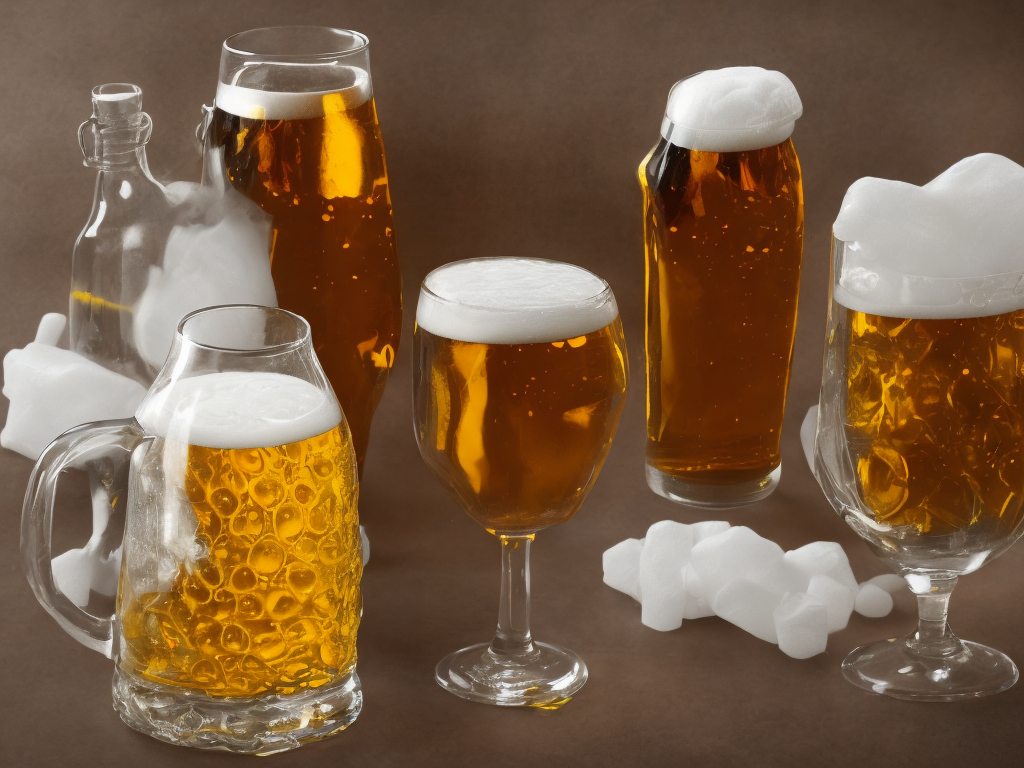
Alcohol and phenol are two types of organic compounds that have many similar properties but also distinct differences. While both compounds contain carbon, hydrogen, and oxygen atoms, the arrangement of these atoms affects the chemical and physical properties of the molecules. In this article, we will explore in detail the key differences between alcohol and phenol.
Definition
Alcohol is a type of organic compound that contains a hydroxyl (-OH) functional group attached to a carbon atom. The most common types of alcohols are methanol, ethanol, and isopropyl alcohol. These compounds are typically colorless, and they have a strong odor and a sweet taste. They are miscible in water and have a low boiling point.
Phenol, on the other hand, is a type of organic compound that has a hydroxyl group attached to an aromatic ring. It is also known as carbolic acid or hydroxybenzene. Phenol is a white crystalline solid that has a characteristic odor and is soluble in water. It has a higher boiling point than alcohols.
Chemical Properties
One of the main differences between alcohols and phenols is their acidity. Phenols are more acidic than alcohols because the hydroxyl group in phenols is attached to an aromatic ring, which makes the compound more stable and less likely to release a proton. In contrast, the hydroxyl group in alcohols is attached to an sp3-hybridized carbon, which is less stable and more likely to release a proton. Therefore, phenols tend to react more readily with strong bases such as sodium hydroxide, while alcohols are less reactive.
Another significant difference between alcohols and phenols is their reactivity towards electrophiles. Phenols are more reactive towards electrophiles due to the presence of the aromatic ring in their structure. The hydroxyl group in phenols can donate electrons to the ring, making it more nucleophilic and more likely to react with electrophiles such as nitric acid or bromine water. In contrast, alcohols are relatively unreactive towards electrophiles due to the lack of an aromatic ring in their structure.
Physical Properties
Several physical properties distinguish alcohols and phenols. One of the most significant differences is their solubility in water. Alcohols are generally soluble in water due to the presence of the polar hydroxyl group, which can interact with water molecules through hydrogen bonding. In contrast, phenols are less soluble in water due to the presence of the nonpolar aromatic ring, which cannot interact with water molecules. However, like alcohols, phenols can also form hydrogen bonds with water molecules through the hydroxyl group, so they are more soluble than non-aromatic hydrocarbons.
The boiling points of alcohols and phenols also differ due to their intermolecular forces. Alcohols have a lower boiling point than phenols because they have weaker London dispersion forces. The hydroxyl group in alcohols can form hydrogen bonds with other alcohol molecules, but it can only form weak dipole-dipole forces with other molecules. In comparison, the aromatic ring in phenols can form stronger dipole-dipole forces due to the pi-electron cloud. Additionally, phenols can form hydrogen bonds with water molecules, further increasing their boiling point.
Uses
Alcohols and phenols have a wide range of applications in various industries. Alcohols are commonly used as solvents, disinfectants, and fuels. Methanol is used as a feedstock in the production of formaldehyde and other chemicals. Ethanol is used as a solvent in the pharmaceutical industry and as a biofuel additive. Isopropyl alcohol is used as a disinfectant and in the production of acetone.
Phenols are used in the production of various chemicals, including plastics, dyes, and pharmaceuticals. Phenol derivatives such as bisphenol A are used in the production of epoxy resins, polycarbonates, and other plastics. Phenol is also used in the production of salicylic acid, a common pain reliever used in the healthcare industry.
Conclusion
In conclusion, alcohol and phenol are two types of organic compounds that have many similarities but also significant differences. Alcohols have a hydroxyl group attached to a carbon atom, while phenols have a hydroxyl group attached to an aromatic ring. Phenols are more acidic and reactive than alcohols and have a higher boiling point due to the intermolecular forces between the aromatic ring and hydroxyl group. Alcohols are generally more soluble in water than phenols. Both compounds have a wide range of applications in various industries, including pharmaceuticals, plastics, and solvents, among others. Understanding the differences between alcohols and phenols is essential for their efficient use in various applications.
 Self-Instruct
Self-Instruct